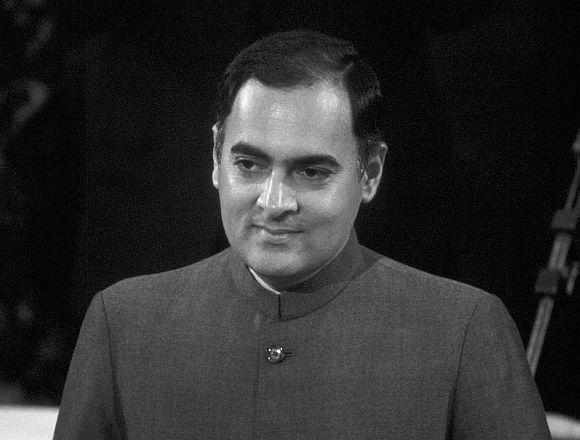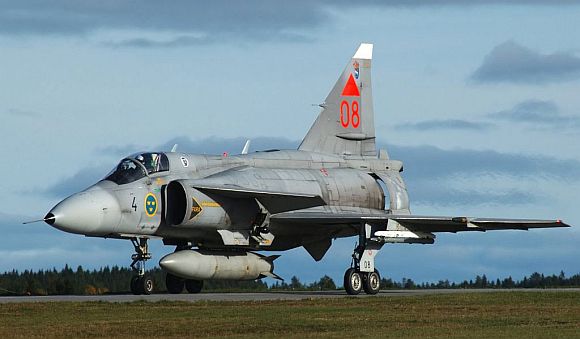 | « Back to article | Print this article |
Rajiv was Swedish jet deal's middleman in 1970s: WikiLeaks
Much before he joined politics, late Prime Minister Rajiv Gandhi may have been 'the main Indian negotiator' for a massive aircraft deal for which his 'family' connections were seen as valuable for Swedish company Saab-Scania when it was trying to sell its Viggen fighter aircraft to India in the 1970s.
This revelation was made by The Hindu, in investigative collaboration with WikiLeaks, after accessing a new set of US diplomatic communications titled the 'Kissinger Cables'.
The October 21, 1975 cable from the New Delhi US Embassy (1975NEWDE14031_b, confidential) says:
"The Swedes hare are once again optimistic about their chances of selling the Viggen to the Indian Air Force. The SAAB-Scania sales manager and the chief technical officer, the former acting commander of the Swedish Air Force, returned to New Delhi 10 days ago for conferences with the Indians. The technical advisor is still here and will remain as long as necessary to handle questions from the new Indian defence minister and new IAF Chief of Staff, both of whom according to our Swedish colleague, require time to brief themselves on the competing fighters..."
"... The Swedes are braced for another Indian appeal for credit which our colleague says Sweden will not grant. But he did say the minister strongly supports the Viggen sale. Our colleague would not say what other concessions the Swedes may be considering. The Swedes here have also made it quite clear they understand the importance of family influences in the final decision in the fighter sweepstakes."
Click on NEXT to read further...
Rajiv was Swedish jet deal's middleman in 1970s: WikiLeaks
"Our colleague describes Rajiv Gandhi in flattering terms and contends his technical expertise is of a high level. This may or may not be. Offhand we may have thought a transport pilot not the best expert to rely upon in evaluating a fighter plane, but then we are speaking of a transport pilot who has another and perhaps more relevant qualification," the cable read.
The first cable said that Air Marshal O P Mehra's son-in-law was the chief negotiator for the competing Mirage, but it does not give his name, the paper said.
Contacted in New Delhi, Navin Behl, the former Air Chief's son-in-law, denied that he was ever involved in any such negotiations, it added.
Despite hectic lobbying by the Swedes, however, India was forced to choose the SEPECAT Jaguar instead after the United States blocked the export of Viggens to the country in 1978 by not issuing an export license for the RM8/JT8D engine.
After the 1965 Indo-Pak war, US and Britain had placed embargoes on supply of military equipment to India.
Since the Viggen's engine was essentially of US origin, it would have been instantly disqualified but for political influence. The possibility of denial of equipment or spares from Britain was also a major hitch.
Click on NEXT to read further...
Rajiv was Swedish jet deal's middleman in 1970s: WikiLeaks
After the imposition of National Emergency, Indira Gandhi had been ousted when elections took place.
The Janata Dal Government decided to pursue the DPSA acquisition vigorously. Meanwhile, British Aerospace was formed as a corporation in April 1977 by the merger of the BAC, Hawker Siddeley Aviation, Hawker Siddeley Dynamics and Scottish Aviation.
In March 1978, an Indian team led by the Defence Secretary visited France, Sweden and England. After receiving its report, the Government decided to ignore the other two aircraft and to enter into a contract with BAe to acquire the Jaguar.
The IAF was clear in its stand of wanting only a two engine aircraft.
A formal announcement of the selection of the Jaguar to meet DPSA requirements was made by the Government on October 6, 1978.


